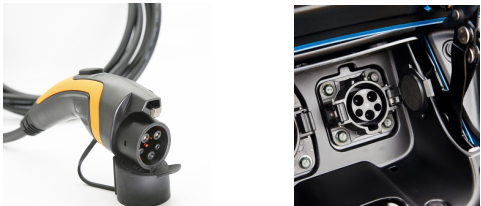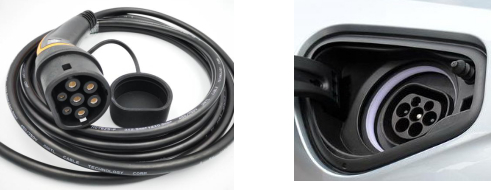 ----SENKU MACHIENRY
----SENKU MACHIENRY
HOW CAN I KNOW THE STANDARD OF MY ELECTRIC VEHICLE?
If you still confused the electric vehicle Charging connector standard?
If you don’t know which Type of ev charging station you should choose?
Please read this article to find a solution.
What is the TYpe1 / SAE J1772 standard ?
SAE J1772 (IEC Type 1), also known as a "J plug", is a North American standard for electrical connectors for electric vehicle.
SAE J1772 (IEC Type 1), is designed for single phase electrical systems with 120 V or 240 V such as those used in North America and Japan.

sae j1772 Type1 charging plug --Install on the ev charging sataion (Left picture)
sae j1772 Type1 charginng socket --Install on the electric vehicle (Right picture)
What is the Type2 / IEC62196 standard ?
IEC 62196 Type 2 connector (commonly referred to as mennekes) is used for charging electric cars within Europe. Electric power is provided as single-phase or three-phase alternating current (AC).
In January 2013, the IEC 62196 Type 2 connector was selected by the European Commission as official charging plug within the European Union. It has since been adopted as the recommended connector in some countries outside of Europe, including New Zealand.

iec 62196 Type2 charging plug iec -- Install on the ev charging station (Left picture)
iec 62196 Type2 charging socket -- Install on the electric vehicle (Right picture)
What is the CCS2 Or CCS1 standard ?
In order to know what is CCS2 and CCS1, we should know the Combined Charging System (CCS) first.
The Combined Charging System (CCS) covers charging electric vehicles using the Combo 1 and Combo 2 connectors at up to 80 or 350 kilowatts.
For both Type 1 (mainly in American) and Type 2 (mainly in E U) this has been accomplished by extending the inlet with two additional DC contacts below the existing AC and communication contacts. The resulting new configurations are commonly known as Combo 1 and Combo 2.
For the DC vehicle connector ,the implementation varies slightly between Combo 1 and Combo 2.
In case of Combo 1 the connector is extended by two DC contacts, while the Type 1 portion of the connector remains the same with the AC contacts (L1 & N) being unused.
For Combo 2 the AC contacts (L1, L2, L3 & N) are completely removed from the connector. Consequently the Type 2 portion of the connector has only three contacts remaining, of which two are communication contacts and one is protective earth.
In both cases, communication and protective earth functions are covered by the original Type 1 or 2 portion of the connector. The Type 1 and Type 2 connectors are described in IEC 62196-2, while the Combo 1 and Combo 2 connectors are described in IEC 62196-3 as Configurations EE and FF.
Automobile manufactures that support CCS include: Jaguar, Renault,Volkswagen Group, General Motors, Tesla, BMW, Daimler, Ford, FCA,Daimler, Kia and Hyundai.
Type 1 and Combo 1 chargers are primarily found in North and Central America, Korea and Taiwan, while Type 2 and Combo 2 can be found in North and South America, Europe, South Africa,Arabia, India, Oceania andAustralia. For DC charging the competing standard GB/T is used in China, while Japan uses CHAdeMO.
Charging Communication
Basic signaling (BS) is done using a PWM signal which is transferred over the control pilot contact (CP) according to IEC 61851-1. This communication is used for safety-related functions, indicating for example if the connector is plugged in, before contacts are made live (or energized), and if both charging station and electric vehicle are ready for charging. AC charging is possible using the PWM signal only. In this case the charging station uses the duty cycle of the PWM to inform the onboard charger of the maximum available current at the charging station.
High-level communication (HLC) is done by modulating a high-frequency signal over the CP contact (also known as Power Line Communication or PLC) to transfer more complex information, which may be used e.g. for DC charging or for other services such as "plug and charge" or load balancing. High-level communication is based on the standard DIN SPEC 70121 and the ISO/IEC 15118-series. For DC charging DIN SPEC 70121 supports only charging powers up to 80 kW; for higher powers communication according to ISO/IEC 15118 is mandatory.
#electric vehicle# # type 1# #type 2# #ccs1# #ccs2#




 Senku ,Bake
Senku ,Bake Senku
Senku